The problem: condensation and mould growth.
Condensation-related moisture occurs, among other things, when the wall surface temperature on the room side is too low due to thermal bridge effects or insufficient thermal insulation. Condensation moisture in everyday life are the typical fogged windows, mirrors or tiles on which condensed moisture runs down, e.g. in the bathroom after a shower or in the kitchen when cooking. Incorrect heating and ventilation behaviour also leads to increased room humidity, which can cause moisture and mould damage in the long term.
ISOTEC climate panels are interior insulation panels made of calcium silicate and belong to our interior insulation systems. A calcium silicate board has the following special properties
- open to diffusion
- thermally insulating and
- capillary conductive
- capillary
conductivity.
Prevent mould infestation with the ISOTEC climate panel
With the climate panel (calcium silicate panel) you prevent condensation-related moisture and obtain a thermally insulated wall surface. The procedure for the climate panel is as follows:
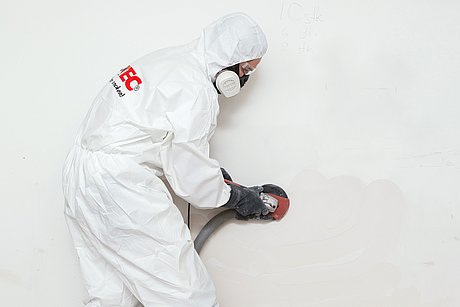
01 Preparation
Initially, we carefully clean the substrate of wallpaper and paint residues. In the case of mould infestation, we remove the mould and dipose of it professionally. Afterwards, we execute preventative disinfection measures.
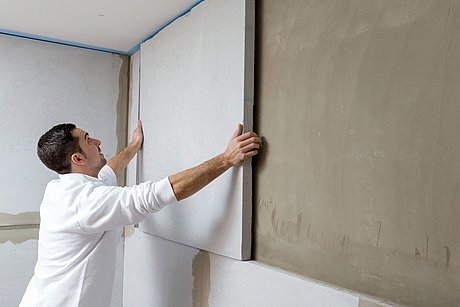
02 Installation
We first apply a special adhesive in order to attach the ISOTEC Climate Boards to the substrate. Our ISOTEC Climate Board is heat insulating, vapour permeable and capillary conductive.
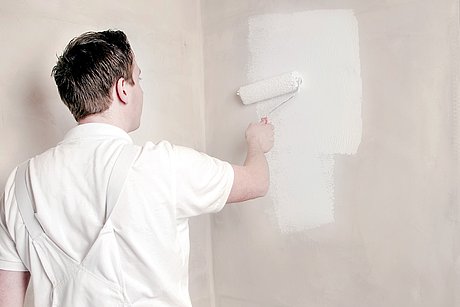
03 Refinement
At last, we revise the seams as well as the entire surface with our special putty. The result is a clean and insulated wall. After the putty has dried completely, a coat of paint can follow. For that purpose, we apply a diffusion-compatible paint suitable for the surface of our ISOTEC Climate Board.
Scientifically verified - practically approvedt
Our ISOTEC Climate Board has received a general technical approval by the German Institute for Civil Engineering. Its physical effects were verified through theoretic calculations and practical tests.
Your advantages
- Prevention of condensation and mould infestation
- Environmentally friendly, ecological building material
- Comfortable indoor climate due to climate regulating effect
- Increase in the value of the property
- Quick use as living space
- Non-combustible
Our satisfied customers
Condensation humidity in a single-family house
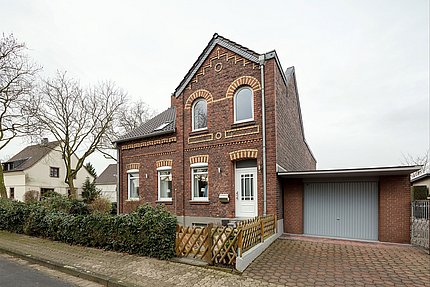
Safe, healthy and environmentally friendly
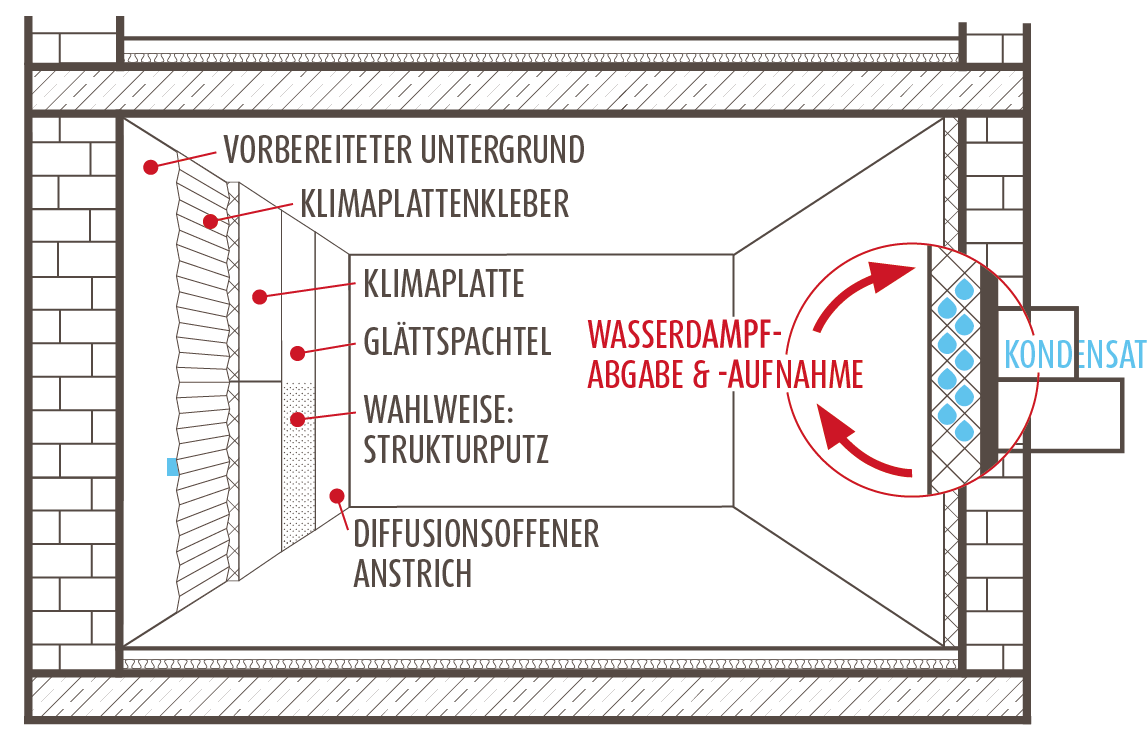
Sand and lime are natural raw materials for the production of our ISOTEC climate panel. After a complex manufacturing process, the climate panel has a high capillary absorption capacity, is heat-insulating, non-combustible and mould-inhibiting.
Details are solved
Problematic thermal bridges, such as window reveals, radiator niches or integrating cross-walls, require special attention. For all areas, we have developed solutions with special panel formats and special moulded parts.
This is what makes our ISOTEC climate panel so special
The ISOTEC climate panel is a mixture of sand and lime (silicon dioxide and calcium oxide).
- As a finished product, the calcium silicate board is able to temporarily absorb moisture and gradually release it back into the room, thus regulating the indoor climate.
- Especially in the colder winter months, the water vapour diffuses from the inside of the room into the calcium silicate board due to the increased temperature difference between the outer and inner wall surfaces. The water vapour precipitates there as condensate and is stored capillary.
- If a temporary evaporation process is started, for example by airing, the stored condensate is directed to the surface of the climate panel and evaporates again into the interior of the room. In the case of condensate occurring at specific points, as is often the case with thermal bridges.
- The capillarity ensures that the condensate is distributed over a larger area and thus provides a larger evaporation surface.
What to look out for in our climate panel:
The wall surface is levelled beforehand so that the climate panel is fully bonded to the substrate. Can wall surfaces with climate panels also be coloured?
After the insulated wall surface has dried completely, a coat of paint can be applied. It should be ensured that it is a diffusion-open special paint matched to the climate panel. We will be happy to advise you on the design of the surface and the optimal colour!
Do the calcium silicate boards have to dry for a long time before you can use the room again?
The quick possibility of use is one of the special features of our procedure with the climate panel. After the entire thermally insulated area has dried out, you can use the rooms as living space again.


